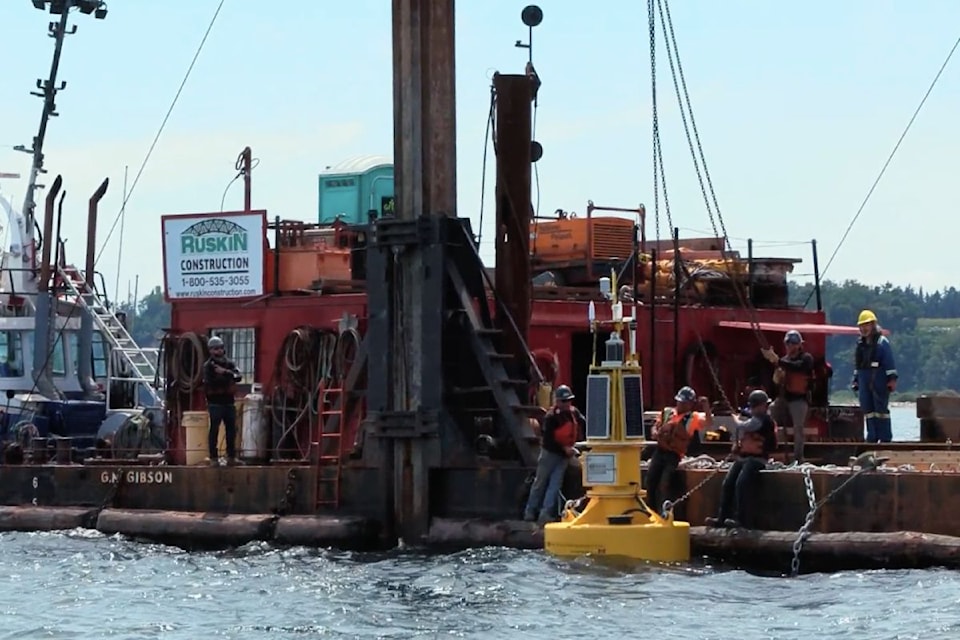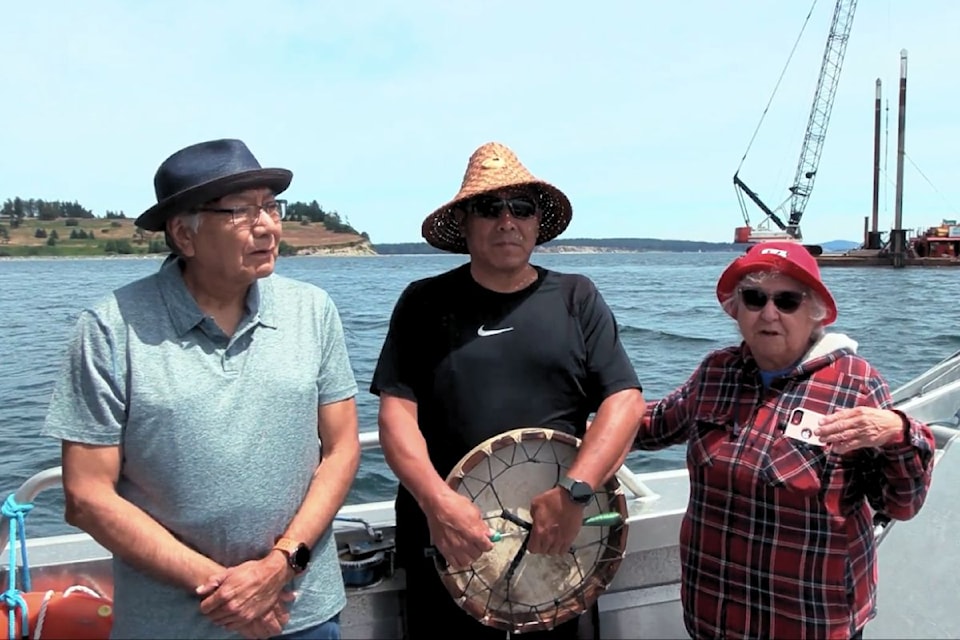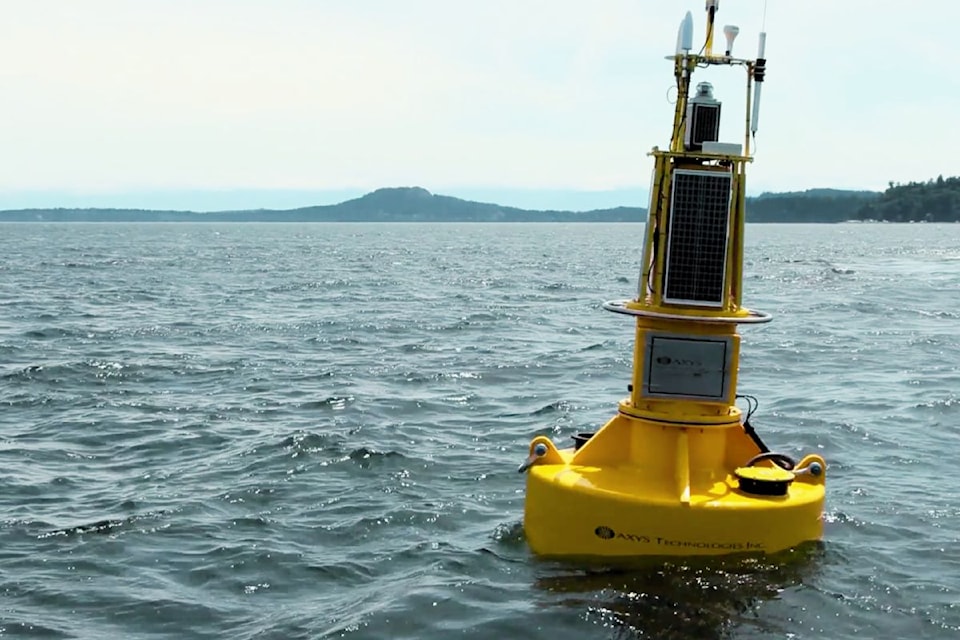The waters of Tsawout First Nation in Saanichton Bay are now under closer watch thanks to the deployment of a state-of-the-art marine monitoring buoy.
The bright yellow, 1.7-metre Watchkeeper buoy, dubbed "QEN’T Junior," represents a significant step towards enhanced marine stewardship and the safeguarding of culturally significant ocean spaces.
Developed in partnership with AXYS Technologies, the buoy was deployed on July 4 after months of meticulous planning and coordination with agencies such as the Coast Guard and Fisheries and Oceans Canada.
The complex operation required a team of divers, a tugboat, a barge and crane operators.
QEN’T Junior is an advanced ocean monitoring platform designed for real-time environmental data collection in coastal and nearshore waters.
It's equipped with various sensors capable of recording a wealth of information, including weather patterns, temperature, salinity, wave activity and even the presence of marine life like orcas and whales. The data will also track the impact of large ships traversing the waters.
The fully solar-powered buoy is designed for long-term use, providing invaluable data for years to come.

For the Tsawout First Nation, the buoy is more than just a scientific tool; it's a powerful symbol of their commitment to protecting their traditional territory.
“This is an initiative that we took to assert our rights and manage our core marine territory as the saltwater people of Tsawout," explained Chrissy Chen, fisheries manager and principal negotiator.
The buoy's deployment coincides with the anniversary of a landmark declaration made in June 2023, when the Tsawout First Nation designated a 155-kilometre area of its traditional waters as an Indigenous Protected and Conserved Area (IPCA). This area, to be known as QEN'T Marine Protected Area – pronounced as “qwant” – carries the meaning of 'to be looking after,' 'caring for,' or 'protecting something or someone' in the SENĆOŦEN language.
Chen, visibly emotional, described the joy of witnessing the buoy finally in the water with members of the Nation on board.
“It was reality to them, like finally we get to do something good, more than just driving around on the boat for some of the water’s guardians,” she said

Chen believes Tsawout could be the only First Nation to have deployed a buoy specifically to monitor their marine waters.
The data collected by QEN’T Junior will not only aid in weather forecasting and environmental monitoring, but will also provide crucial information for mariners and port authorities, enabling more informed decision-making.
The data will be made accessible to the public through the Tsawout Nation Fisheries office, which is currently working to secure funding for data management and record-keeping.
Tsawout councillor and Elder Mavis Underwood, who witnessed the deployment of QEN’T Junior from one of the boats, emphasized the historical significance of the event.
“Our people were working these waters in a very active and healthy way and we’re trying to reclaim that,” she said proudly. "And this is an opportunity for the young students to take advantage of some of the information to prepare them for the future and to look after us."
"I’m really proud of what we’ve done on the water – we are Tsawout Water People after all."
True to their core of marine stewardship on their territorial waters, a derelict boat that's been an eyesore and a source of frustration for over six months on the edge of Saanichton Bay at James Island Wharf, was removed after the deployment of QEN'T Junior was completed on the same day.



